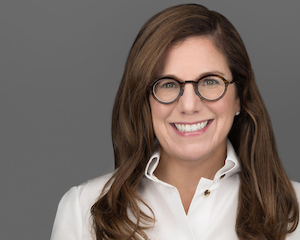By Amy Schabacker Dufrane
Whether meatpackers or microbiologists, employers have a duty to keep their employees out of harm’s way. HR professionals have a crucial role in all aspects of workforce safety, including employee safety and health requirements, how to create and carry out emergency response plans, and what goes into contingency and crisis management. In the United States, there are specific guidelines set forth by the Occupational Safety and Health Administration (OSHA). OSHA ensures that employers provide a safe and healthy workplace by setting and enforcing standards and providing training, education, and assistance. In Europe, a similar organization fulfills that purpose.
While workplace safety might seem apparent to most, it’s actually a complicated and often unique situation. For example, it seems obvious that a construction company will ensure that workers know how to operate equipment and handle heavy objects using proper lifting and carrying techniques. Management should encourage a culture where everyone is comfortable reporting unsafe conditions and where the safety equipment is located. Similarly, a healthcare provider should make sure that workers wash their hands frequently and wear protective clothing such as gloves, masks and gowns. The commitment to workplace safety shouldn’t be one-and-done; instead, it should be above and beyond.
Yet, keeping people healthy and safe at work also means protecting both their physical and mental health. An employee’s addiction led Janet Hanofee, SPHR, and the HR team at a previous employer to expand the factors they considered to keep employees safe on the job, including seemingly insignificant details such as controlling the materials used to ship equipment and supplies.
According to Hanofee, the employee had an existing substance abuse problem that he’d kept hidden from the company. Things came to a head when the person agreed to take a role at a U.S. military installation – in a country with strict laws against alcohol and drug use. Trying to go “cold turkey” to treat his addiction, he started looking for anything that might satiate him. In this case, he found shipping pallets that had been glued together and discovered he could get high by chewing on the wood. After getting extremely sick, he was transported back to the U.S. by the company. The aftermath resulted in Hanofee and her team figuring out how to prevent the same thing from happening again. Her experience shows how significant HR’s role is in managing workforce safety risks: not only keeping employees safe but also assessing the environment to prevent future physical and mental health threats.
Keeping employees safe on the job can take broader forms. In the past decade, hotels in the U.S. and Europe started issuing panic buttons to housekeeping staff to protect them from potential harassment. Attached to a key ring, uniform, or cart, it can be activated with a push of a button to alert hotel security. A spate of lawsuits prompted the distribution of the devices after the unions representing hotel housekeepers demanded action.
As always, HR needs to balance best practices with what’s mandated by the local jurisdiction. For example, some jurisdictions require that a formal training process to teach the workforce how to recognize, prevent, and report sexual harassment be in place. But, even when it is not required, training is a good practice for mitigating risk. When it’s made clear to the entire workforce that this behavior is inappropriate and how to address it, they become more aware and know when to say something. John Hansen, CEO of Bellevue, Wash.-based workplace learning solutions provider Atana, commented, “It’s important to empower employees to stand up for themselves and others by recognizing unwelcome behavior and seeking support from HR when needed.”
Part of keeping your employees safe and secure also means developing and implementing emergency response and crisis management plans. Then, in the event of unforeseen circumstances, the organization can act quickly to manage the situation while protecting employees, limiting damages, and keeping operations up and running.
Such crises represent many possibilities, ranging from an IT outage, death of a key executive, attack in the workplace, or natural disaster. For example, in December 2021, eight workers were killed when a tornado leveled a candle factory in Kentucky. According to news reports, workers pleaded with supervisors to let them go home in the hours before the tornado struck but were told that anyone who left their shift early would be fired. Several survivors sued the company, accusing it of demonstrating flagrant indifference to workers’ safety. In August 2022, OSHA levied $40,000 in penalties related to safety violations on the factory’s owner. A clearly stated crisis plan could have averted the personal and professional ramifications of this tragedy.
HR needs to be involved in every stage of business continuity plans, as well as training for employees at all levels of the organization. Knowing what to do – whether the situation is created by an emergency or a slow-brewing employee incident – is covered by HRCI certification. From overseeing recordkeeping requirements to developing a global strategy to ensuring employees’ physical safety, HRCI covers a wide range of key measures in safety and security for aPHR and aPHRi, PHR and PHRi, SPHR and SPHRi, and GPHR levels candidates. More information is available at http://www.hrci.org

